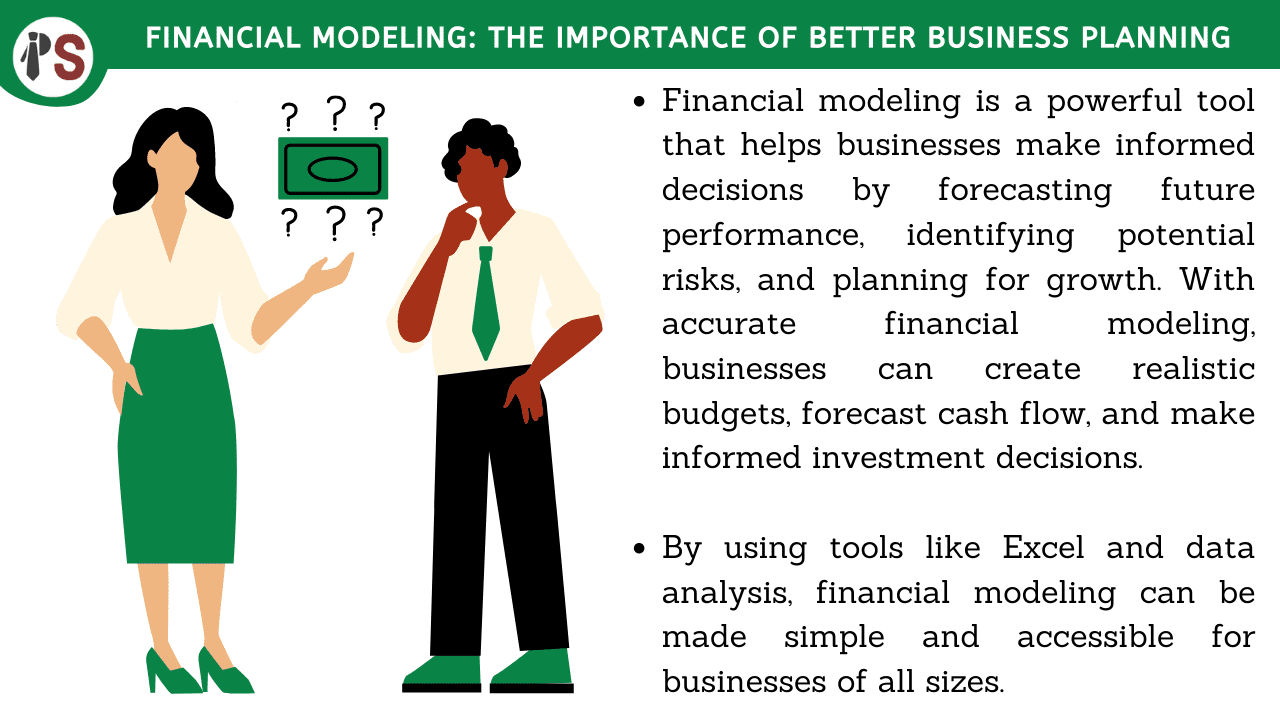
Financial modeling is an essential tool for businesses looking to improve their financial planning and decision-making. It involves building a mathematical model that simulates the financial performance of a business based on various scenarios, assumptions, and inputs. This model can then be used to make more informed business decisions and identify potential risks and opportunities.
Here's a detailed guide on financial modeling and how it can help businesses plan and manage their finances effectively:
Why is Financial Modeling Important?
Financial modeling is important for several reasons, including:
Better Decision-Making: Financial models help businesses make more informed decisions by providing a clear understanding of the potential outcomes of different scenarios.
Risk Management: Financial models help identify potential risks and uncertainties, allowing businesses to take proactive measures to mitigate them.
Business Planning: Financial models can be used to forecast future financial performance, plan budgets, and identify growth opportunities.
Investor Relations: Financial models can be used to communicate financial performance and potential returns to investors, improving their confidence in the business.
Types of Financial Models
There are various types of financial models that businesses can use depending on their specific needs. Here are some common types of financial models:
Financial Statement Models: These models are used to project a business's financial statements, including the income statement, balance sheet, and cash flow statement.
Valuation Models: These models are used to estimate the value of a business, based on factors such as its revenue, growth potential, and market conditions.
Budgeting Models: These models are used to create and manage budgets, forecast cash flow, and plan for different scenarios.
Sensitivity Analysis Models: These models are used to analyze the impact of changing variables on a business's financial performance.
Steps in Financial Modeling
The process of financial modeling involves several steps, including:
Defining the Scope: Identify the purpose and scope of the financial model, including the data and assumptions that will be used.
Gathering Data: Collect and organize all the relevant financial and non-financial data required for the model.
Building the Model: Create the financial model using software or spreadsheets, using appropriate formulas, assumptions, and calculations.
Testing and Validation: Test the model for accuracy and validity by comparing it with actual financial data and making adjustments as necessary.
Scenario Analysis: Run different scenarios through the model to assess the impact of changing variables on the business's financial performance.
Best Practices for Financial Modeling
To ensure that financial modeling is effective and useful, businesses should follow best practices, including:
Consistent Assumptions: Use consistent assumptions and inputs throughout the model to ensure accuracy and reliability.
Clear Documentation: Document all assumptions, formulas, and calculations used in the model, and keep it up to date.
Sensitivity Analysis: Conduct sensitivity analysis to identify potential risks and uncertainties, and plan accordingly.
Regular Updates: Update the financial model regularly to reflect changes in the business environment and ensure it remains relevant.
Conclusion
Financial modeling is an essential tool for businesses looking to plan and manage their finances effectively. By using financial models, businesses can make more informed decisions, manage risks, plan for the future, and communicate financial performance to investors. However, to ensure that financial modeling is effective, businesses must follow best practices, including using consistent assumptions, documenting the model, conducting sensitivity analysis, and updating it regularly.
By using financial modeling, businesses can gain a deeper understanding of their financial performance, make better decisions, and ultimately, achieve greater success.
Keywords: financial modeling, business planning, risk management, investor relations, sensitivity analysis, budgeting models, valuation models, financial statement models, decision-making, best practices.
At Professional Saathi, we offer a range of business consultancy services that help businesses improve their performance, achieve growth, and overcome challenges.
Copyright 2025 © Created By KTPG PROFESSIONAL SAATHI CORPORATE CONSULTANT PRIVATE LIMITED, All Rights Reserved.
Leave Your Comment